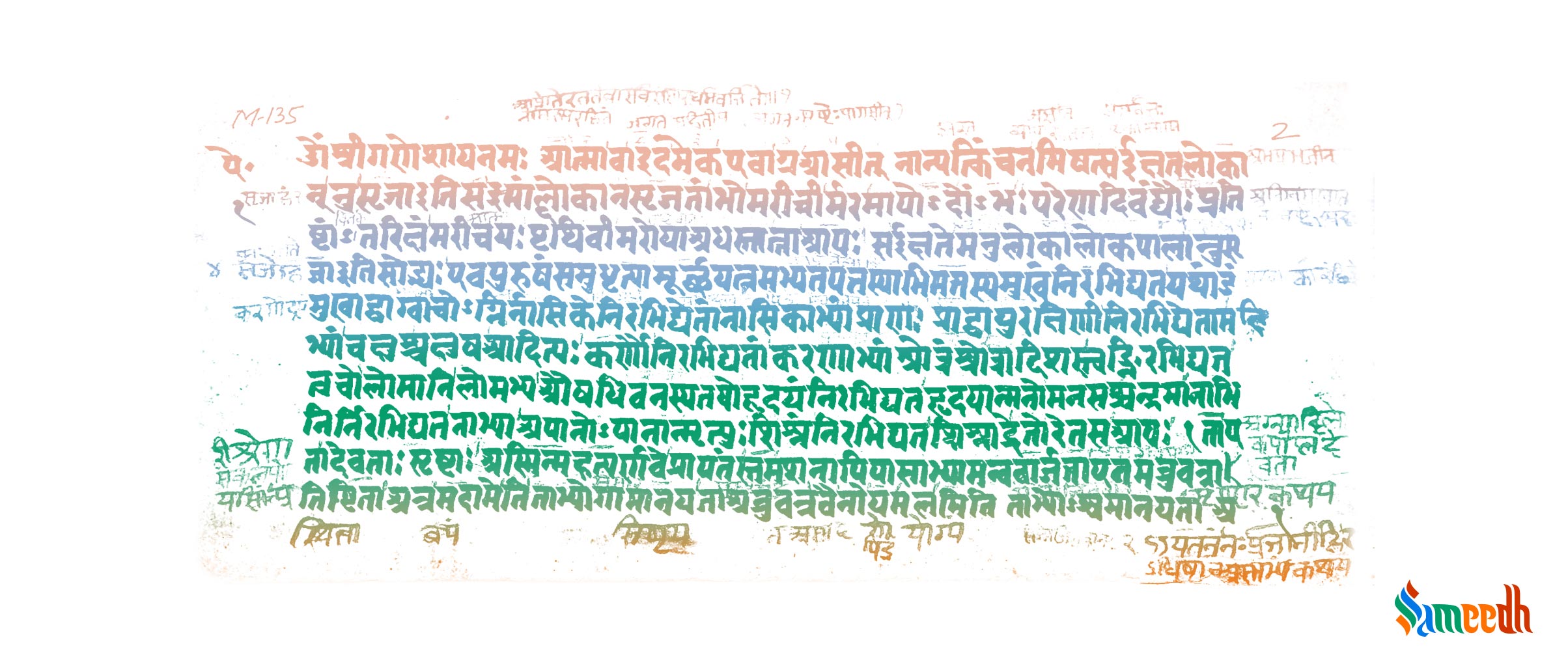The Aitareya Upanishad describes the cycle of life and death with regards to oneself, the universal self ‘Brahman’, and the journey of a soul through this process.

Aitareya Upanishad manuscript; Image Source: Ms Sarah Welch
What is Upanishad?
Upanishad is the scriptures that connect the knowledge given in the four Ved to common people’s lives and traditions. They are called Upanishad (sitting down closely) because Upa means ‘near’ and Shad means ‘to sit’. Many of the Upanishads are written in the style of a conversation between a Guru and a Shishya sitting near the feet of the teacher. Upanishads are aimed at bringing knowledge, prosperity, and enlightenment to the common people’s lives. Every Upanishad is focused on the knowledge covered in one particular Ved from Rigved, Samaved, Shukla Yajurved, Krishna Yajurved, and Atharvaved.
The legacy of Aitareya Upanishad
Aitareya Upanishad is a short yet significant Upanishad which effectively explains the connection between philosophy and physics. It is associated with the teachings of Rigved. It is also considered to be similar to Bahvrich Upanishad.
Aitareya Upanishad is generally attributed to rishi Aitareya Mahidas, but just like the other Upanishad, this one is also considered to be an anthology. It is believed to be created around the 5th to 6th century BCE. Noted scholars like Adi Shankaracharya and Madhavacharya have provided detailed commentary on the teachings of Aitareya Upanishad.
The structure of Aitareya Upanishad
Aitareya Upanishad is written in the form of short prose. It consists of the 4th, 5th, and 6th chapters of Aitareya Aranyak. There are three chapters in the Aitareya Upanishad. The first chapter has three sections, while the rest two chapters have no sections. And also, there is an additional section of peace chants.
- Chapter I – Section 1: The Creation of the Cosmic Person
- Chapter I – Section 2: Cosmic Powers in the Human Body
- Chapter I – Section 3: Descent of Consciousness in Man
- Chapter II: The Three Births of the Self
- Chapter III: Consciousness is Supreme Oneness
The Knowledge of Aitareya Upanishad
The Aitareya Upanishad explains the journey of a soul in life form – from birth to death. In the first chapter it is explained that man and the world is the creation of Atman. In the second chapter it is explained that Atman undergoes a threefold birth. And in the third chapter it is explained that the essence of Atman is consciousness.
Chapter 1: Creation of Atman
This chapter explains how everything in the universe has emerged from Brahman and how creation leads to a chain reaction, resulting in so many other creations. It explains the stage-wise process of their creation and inter-connection.
Chapter 2: Atman undergoes a threefold birth
This chapter explains how our birth is a three-fold process. Starting from the proliferation of life of the parents, to sexual union, and ultimately the physical birth from a mother’s womb. It explains how Atman stays immortal through the process of rebirth.
Chapter 3: Atman is consciousness
This chapter discusses the departure of the soul from the body. It explains how the soul undergoes numerous rebirths until it attains self-consciousness and liberation. So, in order to achieve Moksha, one needs to just understand oneself, and by extension- the universe.